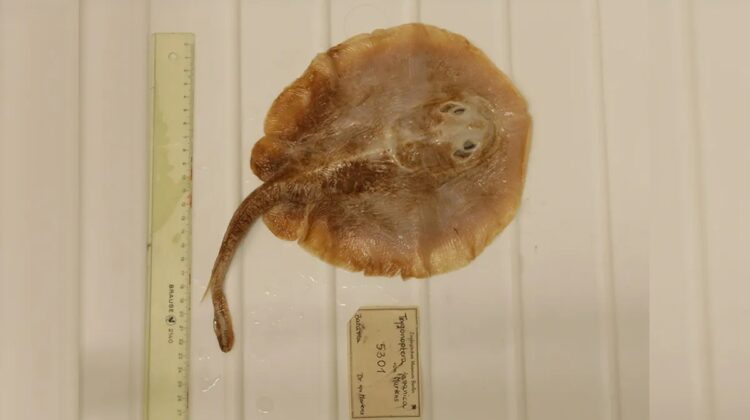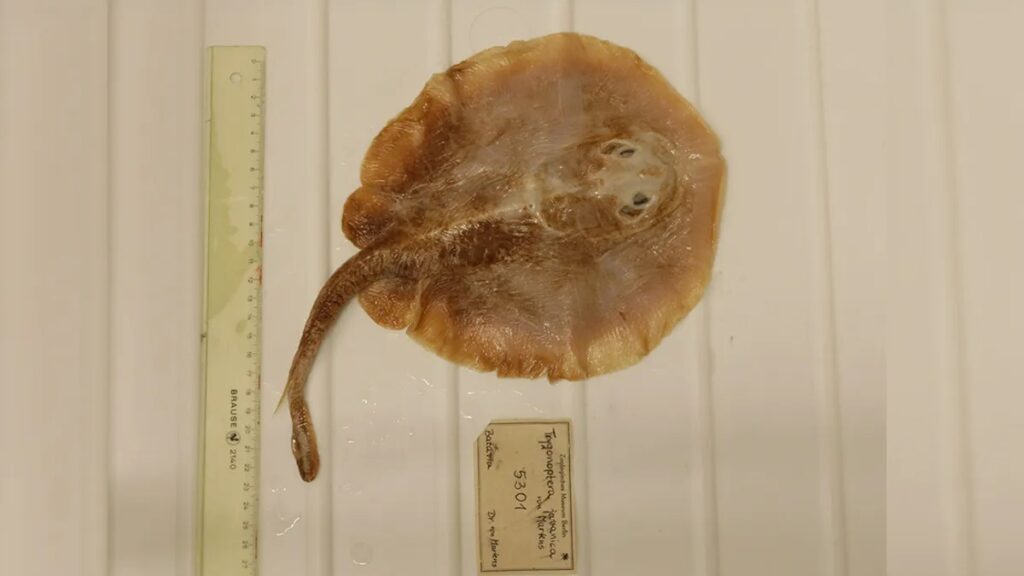
In a disheartening development, scientists from Charles Darwin University (CDU), Australia, have declared the Java stingaree (Urolophus javanicus) as the first marine fish species to go extinct as a direct consequence of human activity. The somber declaration came with an update to the Red List of Threatened Species, published by the International Union for Conservation of Nature (IUCN) in December.
The Java stingaree, a species of ray roughly the size of a dinner plate, was an exceptionally rare find, known only from a single specimen collected in 1862 from a fish market in Jakarta, Indonesia. While fishing posed a significant threat to the species, it was not the sole challenge it faced.

Image credit: Edda Aßel, Museum für Naturkunde Berlin, provided by CDU
CDU PhD Candidate and lead assessor, Julia Constance, highlighted the role of intensive and largely unregulated fishing as a major contributor to the decline of the Java Stingaree population. Coastal fish catches in the Java Sea were already dwindling by the 1870s, signaling the beginning of a perilous journey for this unique marine creature.
The northern coast of Java, particularly Jakarta Bay, where the species was documented, faced additional challenges. Heavy industrialization coupled with extensive and long-term habitat loss and degradation intensified the pressures on the already endangered species. These combined impacts ultimately led to the unfortunate extinction of the Java stingaree.
An international team of scientists compiled all available information on the species, including surveys and monitoring project data. Through comprehensive modeling, they concluded that the Java stingaree has become the first marine fish to succumb to extinction due to human activity.
CDU PhD Candidate Benaya Simeon, who is studying threatened rays in Indonesia, emphasized the uniqueness of the Java Stingaree, describing it as a “dinner plate-sized ray with no similar species in Java.” Despite extensive monitoring at various fish landing sites along the northern coast of Java and across Indonesia, the elusive Java Stingaree has not been sighted, confirming its extinction.

This alarming news follows the recent extinction alert issued by the International Whaling Commission (IWC) after 70 years, concerning the vaquita (Phocoena sinus), a marine mammal. With only an estimated 10 vaquitas remaining in the Gulf of California, Mexico, urgent action is needed to prevent the vaquita from meeting the same fate as the Java stingaree.
Dr. Peter Kyne, Senior Research Fellow at CDU’s Research Institute for the Environment and Livelihoods, stressed the significance of the Java Stingaree’s extinction as a warning for global conservation efforts. He emphasized the need for comprehensive management strategies, including habitat protection, curbing overfishing, and securing the livelihoods of communities dependent on marine resources. The loss of the Java stingaree underscores the pressing need for collective action to safeguard threatened marine species worldwide.

Leave a Reply